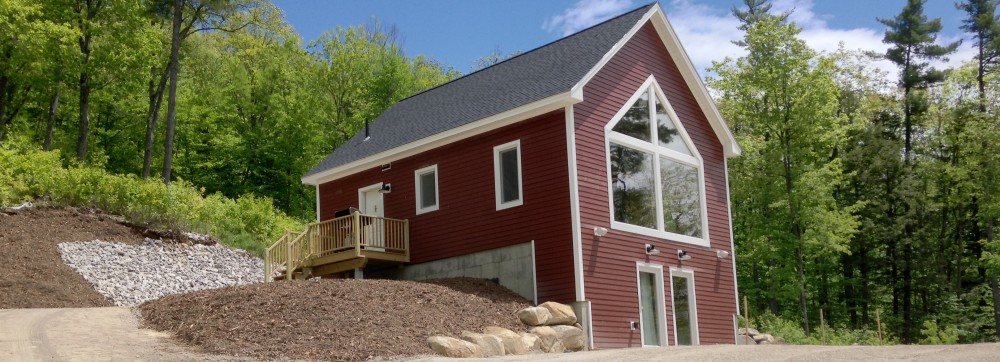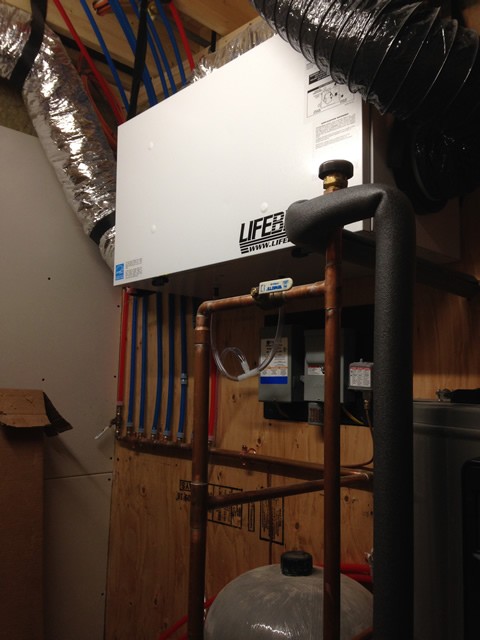After using my home for several weeks I found the HRV was not delivering the level of comfort I expected. At times the house seemed over ventilated and other times under ventilated. Not to mention I have been experiencing unexpected swings in humidity and occupant comfort challenges.
I re-ran the ventilation calculations and discovered (as expected) the ventilation requirements for the house were very different when there are 2 occupants versus 12 occupants.
Out of the box, my Lifebreath RNC 155 HRV does not come with a controller. I planned initially to set the system to run continuously on “low” and have a “boost” button in each bathroom to help with high humidity and odor events. However, I found this did not offer enough control.
I purchased a zwave dry-contact switch for the “low” setting of the HRV. Using a dry-contact switch instead of a zwave plug-in module allows the bathroom “boost” buttons to work independently. It was fairly simply to wire-in the device and then connect it with my smart home hub.
I programmed three scenes that I could toggle through; no-occupant, low-occupant, and high-occupant. Each of these adjusts the hourly run-time of the HRV to achieve the right-amount of ventilation. Additionally, now the zwave hygrometer is able to switch-on the HRV to help with dehumidification.
Interfacing my HRV to smart home controller has allowed for finer control in the name of comfort and proper ventilation.

